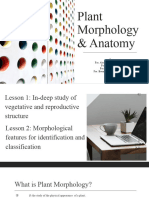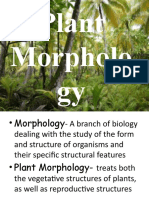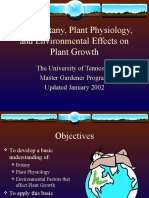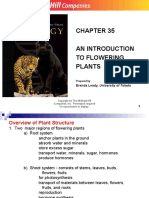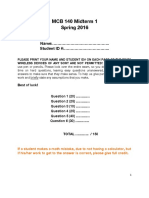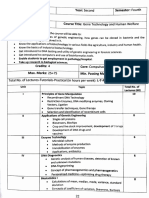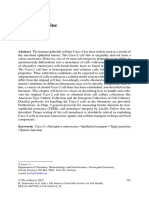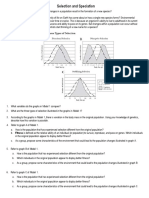BOT111 – Module 1 o At the largest scale is the study of
PLANT MORPHOLOGY & ANATOMY plant growth habit, the overall
architecture of a plant.
Plant Morphology – the study of the physical form and o The pattern of branching in a tree
external structure of plants. will vary from species to species, as
will the appearance of a plant as a
Four Major Areas of Investigation in Plant Morphology tree, herb, or grass.
Plant morphology is comparative. Plant morphology examines the pattern of
o A plant morphologist makes development.
comparisons between structures in o Plant development is the process by
many different plants of the same which structures originate and
or different species. mature as a plant grows.
Homology – the structure o This area of plant morphology
is similar between the overlaps with plant physiology and
two species because of ecology.
shared ancestry and
common genetics. Plant Anatomy – the study of the internal structure of
Convergence – the plants.
structure is similar o Plant anatomy is now frequently investigated
between the two species at the cellular level, and often involves the
because of independent sectioning of tissues and microscopy.
adaptation to common o Plant anatomy is usually divided into the
environmental pressures. following structural categories.
o This aspect of plant morphology o Root anatomy
overlaps with the study of plant o Stems anatomy
evolution and paleobotany. o Wood anatomy
o Leaf anatomy
Plant morphology treats both the vegetative o Flower anatomy
structures of plants, as well as the o Fruit/Seed anatomy
reproductive structures.
o The vegetative structures of
vascular plants include the study of
the shoot system, composed of
stems and leaves, as well as the
root system.
o The reproductive structures are
more varied and are usually specific
to a particular group of plants, such
as flowers and seeds, fern sori, and
moss capsules.
o This area of plant morphology
overlaps with the study of
biodiversity and plant systematics.
Plant morphology studies plant structure at a
range of scales.
o At the smallest scales are
ultrastructure, the general
structural features of cells visible
only with the aid of an electron
microscope, and cytology, the study
of cells using optical microscopy.
o At this scale, plant morphology
overlaps with plant anatomy as a
field of study.

